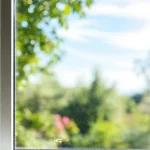Effective Strategies for Sustainable Home Redesign in the UK
When considering sustainable home redesign UK, focusing on energy efficiency tailored to the UK’s often damp and temperate climate is essential. One effective strategy is improving insulation quality and optimising home layouts to minimise heat loss during colder months and maximise natural light. This reduces reliance on artificial heating and lighting, significantly lowering energy consumption.
Incorporating renewable energy systems plays a vital role in eco-friendly home strategies. For instance, solar panels and heat pumps convert natural energy sources into usable power, which can efficiently address heating and electricity needs in residential settings. Their integration aligns well with green architecture UK standards promoting reduced carbon emissions.
Also read : How Can Sustainable Innovations Transform Housing in the UK?
Using passive design principles is another key tactic. These principles leverage building orientation, window placement, and thermal mass materials to regulate indoor temperatures naturally. By minimising the need for electrical heating or cooling, you ensure your home remains comfortable year-round while embracing sustainable home redesign UK goals. This holistic approach not only contributes to environmental conservation but also often leads to long-term cost savings for homeowners.
Selecting Sustainable Building Materials for UK Homes
Choosing sustainable building materials UK is crucial for minimizing environmental impact during home redesign. Locally sourced and recycled materials offer significant benefits by reducing transportation emissions and repurposing waste, contributing to a lower carbon footprint. For example, reclaimed timber not only lessens deforestation but adds unique character to a home.
Also read : What are the best practices for maintaining a historic home in the UK?
Innovations in eco-friendly construction include hempcrete, a bio-composite material known for excellent insulation and carbon absorption properties, making it ideal for UK climates. Natural insulation types such as sheep’s wool or cellulose further enhance energy efficiency without harmful chemicals.
When planning sustainable home redesign UK, understanding regulatory standards is essential. Certifications like BES 6001 or the UK’s Environmental Product Declarations (EPDs) help homeowners and builders verify that chosen materials meet environmental and health benchmarks. This ensures that your eco-friendly construction is both effective and compliant.
By prioritizing low-impact materials that perform well in the UK context, you support green architecture UK goals while future-proofing your home against environmental challenges.
Integrating Renewable Energy Systems into Home Redesign
Renewable energy UK homes increasingly rely on solar energy integration and heat pump technologies to enhance energy efficiency. Solar photovoltaic (PV) systems convert sunlight directly into electricity, making them highly suitable for UK homes despite variable weather. Solar thermal panels complement this by efficiently heating water, reducing dependence on gas or electric boilers.
Ground and air source heat pumps play a critical role in eco-friendly home strategies. These systems extract heat from the ground or outside air, delivering consistent heating and cooling with substantially lower energy consumption compared to traditional methods. Their adaptability to the UK climate makes them a smart choice in sustainable home redesign UK.
Moreover, advanced home energy systems include smart energy management solutions. These optimize when and how renewable energy is used or stored, ensuring maximum efficiency and cost savings. For example, solar energy generated during the day can be stored in batteries for evening use, reducing grid reliance.
Integrating these technologies aligns with green architecture UK principles, promoting a reduction in carbon emissions while improving comfort. Proper planning during the redesign phase ensures seamless incorporation, making renewable energy an effective cornerstone of sustainable home redesign UK.
Effective Strategies for Sustainable Home Redesign in the UK
Achieving sustainable home redesign UK success hinges on tailoring designs to the local climate. Effective insulation adaptations reduce heat loss during cold, damp months, a common challenge in the UK. Using high-performance insulation materials combined with airtight construction limits energy waste, cutting heating bills significantly.
Energy-efficient layouts further support eco-friendly home strategies by positioning living spaces to capture maximum daylight. This natural light reduces the need for artificial lighting, enhancing comfort while conserving energy. Incorporating larger south-facing windows, for example, leverages the UK’s available sunlight optimally.
Passive design principles also play a crucial role. They include utilising thermal mass materials, like brick or stone, which absorb heat by day and release it at night, balancing indoor temperatures without mechanical help. Proper ventilation ensures fresh air circulation without unnecessary energy loss, supporting green architecture UK objectives.
Incorporating renewable sources such as solar panels and heat pumps complements these strategies. Their integration during the redesign phase ensures efficient energy use and long-term sustainability. Together, these approaches form a comprehensive blueprint for eco-friendly home strategies that thrive in the UK context.
Effective Strategies for Sustainable Home Redesign in the UK
Designing for the UK’s climate demands careful incorporation of energy-efficient layouts and targeted insulation adaptations. Effective sustainable home redesign UK strategies position living areas to maximise natural light and warmth, while cold zones like utility rooms help buffer heat loss. High-quality insulation materials tailored to damp and chilly conditions reduce energy waste, keeping homes cosy without excessive heating.
Applying passive design principles is fundamental. By orienting buildings to capture solar gain, optimising window placement, and using thermal mass materials that store and release heat, homeowners can maintain comfortable temperatures year-round naturally. These principles reduce reliance on mechanical heating and cooling, essential for eco-friendly home strategies.
Renewable technologies like solar panels and heat pumps integrate smoothly into such designs, providing clean, efficient energy within residential settings. Solar panels generate electricity despite variable sunlight, while heat pumps extract renewable heat from air or ground sources. Together, they align with green architecture UK goals by cutting carbon emissions and utility expenses. Combining smart design with renewables ensures a holistic sustainable home redesign UK, delivering environmental benefits without compromising comfort.
Effective Strategies for Sustainable Home Redesign in the UK
Adapting sustainable home redesign UK to the local climate starts with well-planned energy-efficient layouts. Positioning living spaces to maximise natural light and warmth reduces reliance on artificial heating and lighting, essential in often overcast UK conditions. Complementing this, insulation adaptations tailored to the damp, cool environment ensure minimal heat loss, preserving indoor comfort while cutting energy use.
Integrating renewable energy sources such as solar panels and heat pumps further enhances eco-friendly home strategies. Solar technology efficiently harnesses UK sunlight variability, while heat pumps provide consistent, low-carbon heating by extracting renewable heat from air or ground. Both work harmoniously within residential settings, aligning with green architecture UK principles focused on reducing environmental impact.
Applying passive design principles remains fundamental throughout the year. Techniques like optimising building orientation, utilising thermal mass materials, and ensuring controlled ventilation limit energy consumption by naturally regulating indoor temperatures. This comprehensive approach supports sustainable home redesign UK goals by balancing comfort, efficiency, and environmental responsibility.
Effective Strategies for Sustainable Home Redesign in the UK
Tailoring sustainable home redesign UK to the local climate involves a precise blend of design and technology. Energy-efficient layouts strategically position living spaces to capture maximum natural light and warmth, reducing the need for artificial heating. Insulation adaptations, using materials suited for the UK’s damp, cool conditions, prevent heat loss and maintain indoor comfort.
Implementing eco-friendly home strategies also means leveraging renewable energy sources such as solar panels and heat pumps. Solar panels efficiently generate electricity amid the UK’s variable sunlight, while heat pumps extract renewable heat from air or ground sources, offering consistent, low-carbon heating. Together, they reduce reliance on fossil fuels and lower utility costs.
Passive design principles further contribute by optimising building orientation and utilising thermal mass materials that store and release heat effectively. Controlled ventilation balances airflow without significant energy loss, maintaining healthy indoor environments. These methods collectively align with green architecture UK goals, ensuring homes deliver comfort, sustainability, and long-term savings while respecting local environmental challenges.










